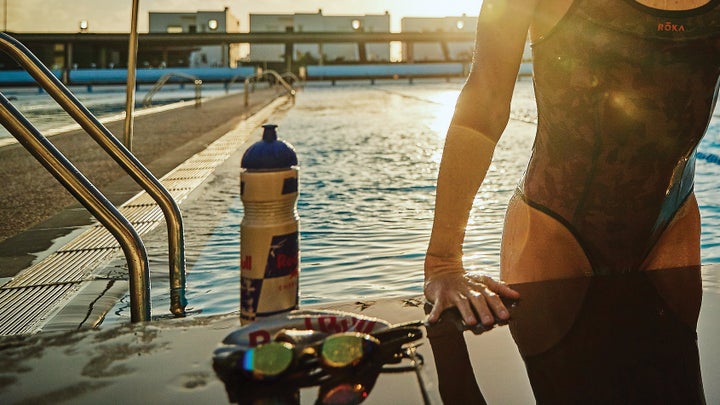New perk! Get after it with local recommendations just for you. Discover nearby events, routes out your door, and hidden gems when you sign up for the Local Running Drop.
Sodium chloride—better known to most as salt—is essential for many functions in your body. Salt helps maintain cognitive function, supports healthy blood pressure, and is necessary for digestion. Further still, sodium, which makes up 40% of salt, plays a critical role in the proper functioning of muscles and cells, the transmission of nerve impulses between organs and helps prevent dehydration. In extreme cases, without adequate sodium, our blood volume goes down, leading to the brain and kidneys shutting down – and this is before we start training.
Hydration is one of the most debatable topics for endurance athletes within the sports performance nutrition arena. While some believe relying on water and thirst are appropriate solutions, others argue sports drinks with electrolytes provide the nutritional platform for optimal performance. And, if you asked a group of athletes about their hydration habits in training, some wouldn’t have a plan, others would claim they don’t need to drink while running, and some may carry water or just wing it depending on thirst. So, if you are confused, join the club!
RELATED: Triathlete’s Complete Guide to Nutrition and Fueling
What’s wrong with rehydrating with water only in endurance sports? For a better understanding, first….
Let’s talk about sweat
Sweat is the dissipation of heat, generated as a byproduct of muscular work, often exacerbated by environmental conditions, and helps maintain body temperature within an acceptable, healthy range. Dehydration is the process of losing body water from blood plasma and ultimately leads to hypohydration. Sweat contains electrolytes: sodium, potassium, chloride, and small amounts of minerals (iron, calcium, and magnesium). Of all these, sodium is the most critical and takes the biggest hit from sweat loss, making it the most important electrolyte to replace. The body requires sodium to conduct nerve impulses, contract and relax muscles, and improve the absorption of fluids by pulling water into your bloodstream more effectively than if you just drank water. Think of it this way; sweating out sodium and rehydrating with water further dilutes your blood sodium levels.
RELATED: Are You Doing Thirst Right? The Science Says Probably Not
Signs of low sodium and hyponatremia
In hot and humid conditions, training sessions lasting longer than 75 min, overdrinking fluids above and beyond sweat and urinary losses, and drinking water only despite a high sweat rate can lead to hyponatremia, also known as water intoxication. When hyponatremia happens, there is not enough sodium in the blood, leading to rare but life-threatening complications. Excessive fluid intake causes the brain and lungs to swell as fluid shifts to balance out blood sodium levels.
Signs and symptoms of low sodium and hyponatremia:
- Nausea and vomiting
- Headache
- Confusion
- Loss of energy
- Fatigue
- Restlessness and irritability
- Muscle weakness, spasms, or cramps
- Seizures
- Unconsciousness
- Coma
What are the signs of dehydration?
When you become dehydrated, the most significant impact is a reduction in your total blood volume, which causes increased perceived exertion, increased heart rate relative to output, increased body temperature, and decreased exercise capacity, ultimately leading to a decline in performance.
Athletes of all abilities can battle fatigue associated with dehydration since it is impossible to meet 100% fluid loss during exercise without a health and performance backlash. However,with as little as 2% body weight loss, there can be a noticeable decline in aerobic exercise performance and cognitive function. When weight loss reaches 4%, the rate of fluid absorption from the intestines decreases, making it nearly impossible to counteract.
Signs and symptoms of dehydration:
- Dizziness, confusion, lightheadedness
- Dry lips, mouth, skin
- Physical and mental fatigue
- Decreased pace and performance
- Darkened urine (one of the first indicators)
- Increased body temperature, HR, and Rate of Perceived Exertion (RPE)
How do you determine your sweat rate?
Sweat rates vary from 0.3-2.4 L/hr during exercise, depending on exercise intensity, duration, fitness level, heat acclimatization, altitude, temperature, and humidity.
If you haven’t already, it’s a good idea to conduct a sweat rate test since it’s highly individual from one athlete to another. Test your sweat rate by weighing before and after training sessions of 60 minutes or less. If you drink during the “test” session, consume water only and, if applicable, account for urinary losses during the test session. Add ounces consumed during the session to the oz/lbs. lost during the session. 16oz = 1 lb. Triathletes can also use this Sweat Rate Calculator to aid in crunching the numbers.
Keep in mind these results will not reflect sodium loss, only fluid loss and percentage of body weight loss for that specific intensity and in those environmental conditions, anyway. Repeat in various environments, ideally in the similar temperature and humidity of your race conditions, to keep tabs on your sweat rate. Consume 16-24oz of fluid for every pound of weight lost.
Sweat sodium testing
Aside from sweat rate testing, athletes can test their sweat sodium loss through sweat testing companies such as Levelen and Precision Hydration. Some sweat sodium tests take place while cycling or running in a laboratory setting, while other sweat tests can be done without working out.
Generally speaking, endurance athletes lose 500+mg sodium per pound or 1g per liter of sweat loss. But, it’s not uncommon to see salty sweaters lose more than 2500+mg sodium per hour. Yep – that’s a lot! If you notice white residue or streaks on your hat, clothing, or skin during or after a workout, you would be in the “salty sweater” camp. A sodium preload regimen for athletes with high sweat sodium losses would be appropriate since it’s impossible to take in 100% sodium loss in excessive sodium loss cases.
Although skeletal muscle cramps are typically caused by muscle fatigue, they can be associated with electrolyte imbalances during exercise (not enough sodium related to fluid intake) and hypohydration (not drinking enough to replace fluid loss). In addition, athletes with high sweat rates and high sweat sodium concentrations are at greater risk for cramping, particularly when not acclimated to the heat and environment.
RELATED: Should You Be Sweat Testing? Let’s Examine the Trade-Offs

Sports hydration guidelines for triathletes
Sports drinks containing sodium are designed to fuel your body, help meet sodium loss through sweat and maintain hydration to support performance. Additional sodium may be needed for heavy, salty sweaters and endurance athletes in hot/humid climates and should be paired with fluids. So, popping salt tabs like it’s candy is ill-advised.
Sodium chloride is a staple ingredient in properly formulated sports drinks. It improves palpability, stimulates the drive to drink, helps maintain plasma volume, and serves as the primary osmotic impetus for restoring extracellular fluid volume after exercise helps facilitate recovery.
- Exercise lasting less than 60 minutes: water is sufficient; drink to thirst.
- Exercise lasting more than 60 minutes: aim for 4-8 oz per 15 min.
- In hot, humid climates, training sessions lasting longer than 90 minutes, and when more than one training session per day, increase fluid intake and sodium to assist with fluid retention.
- One generous sip = 1 ounce.
- Relying on thirst is not an accurate indicator of hydration status. Most people don’t become thirsty until more than 2% of their body weight has been lost.
- Sports drinks should not exceed 8% concentration of carbohydrates. The ideal concentration is 4-6%, approximately 10-14 grams/carbs per 8 oz of fluids.
- Sodium consumption range: include 180-225+ mg sodium/8oz fluids consumed during activity to accelerate absorption and fluid retention and encourage fluid intake by driving the thirst mechanism. Keep in mind this is highly individual and varies significantly among athletes.
- Older athletes are more prone to age-related dampened thirst sensation and should be proactive in drinking early and often. (For more, read this article on the 3 Ways Hydration Needs Change As You Age.)
- Children are more susceptible to dehydration than adults because their surface area to body mass ratio is higher. So, they need to be more vigilant with hydration, especially in warmer climates.
- Monitor hydration status by checking urine color. (Tip: aim for pale yellow urine – not clear.)
- After workouts, drink fluids with electrolytes or pair water with salty snacks to improve fluid retention, restore hydration, and optimize recovery. Chugging fluids to accelerate hydration is futile, since it takes at least 6 hours to achieve adequate hydration. So instead of chugging, take small sips often.
RELATED: How to Choose the Best Sports Drink for Triathlon
The final word
The primary cause of early fatigue is dehydration and – it’s preventable. Simply put, drinking a properly formulated sports drink in endurance sports is essential to your performance, health, and recovery – and even more so in a warm or humid climate.
Susan Kitchen is a Sports Certified Registered Dietitian, USA Triathlon and Ironman Certified Coach, accomplished endurance athlete, and published author. She is the owner of Race Smart, an endurance coaching and performance nutrition company that works with athletes across the globe as they strive toward optimal health, fitness, and performance.
